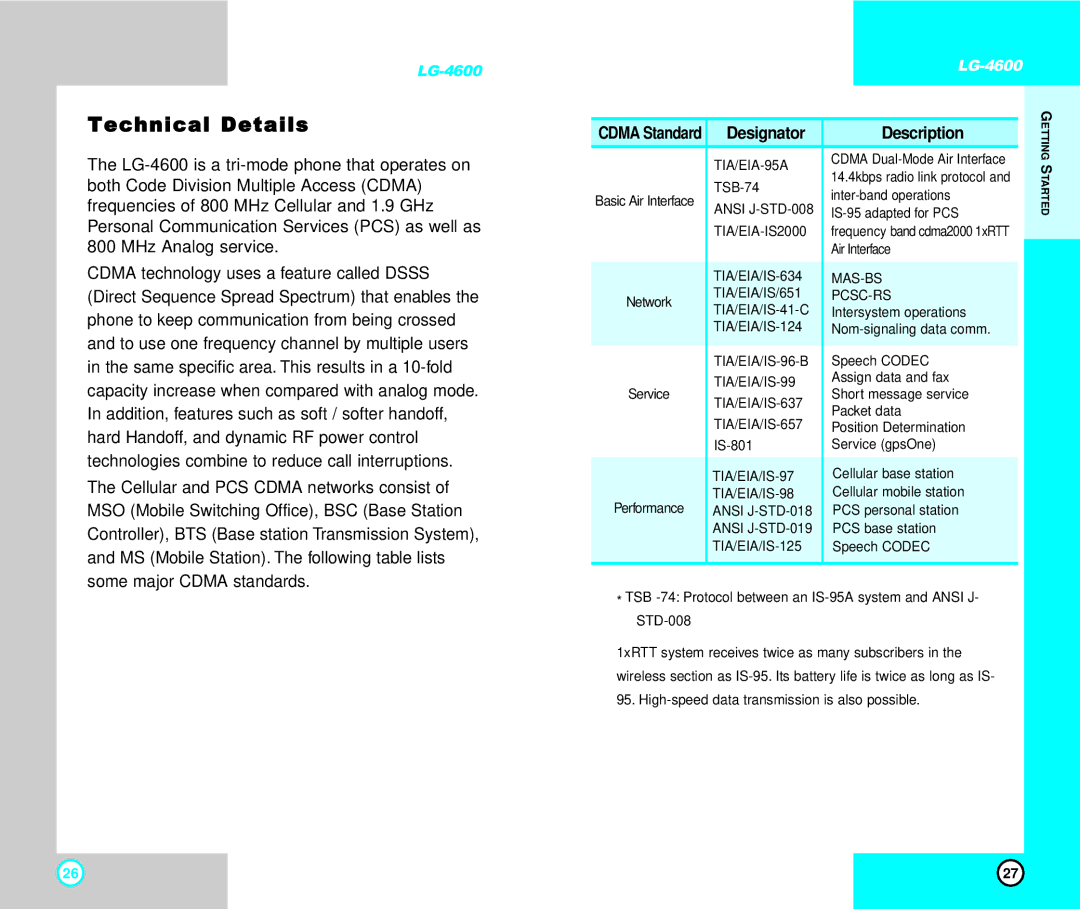
Technical Details
The
CDMA technology uses a feature called DSSS (Direct Sequence Spread Spectrum) that enables the phone to keep communication from being crossed and to use one frequency channel by multiple users in the same specific area. This results in a
The Cellular and PCS CDMA networks consist of MSO (Mobile Switching Office), BSC (Base Station Controller), BTS (Base station Transmission System), and MS (Mobile Station). The following table lists some major CDMA standards.
|
| |||
|
|
| ||
CDMA Standard | Designator | Description |
| |
|
| CDMA | ||
| 14.4kbps radio link protocol and | |||
| ||||
Basic Air Interface | ||||
ANSI | ||||
| ||||
| frequency band cdma2000 1xRTT | |||
|
| Air Interface | ||
|
|
| ||
|
| |||
Network | TIA/EIA/IS/651 |
| ||
Intersystem operations |
| |||
|
| |||
|
| |||
|
|
|
| |
| Speech CODEC | |||
| Assign data and fax | |||
Service | Short message service | |||
| Packet data | |||
| ||||
| Position Determination | |||
| Service (gpsOne) | |||
|
|
| ||
| Cellular base station |
| ||
Performance | Cellular mobile station |
| ||
ANSI | PCS personal station |
| ||
| ANSI | PCS base station |
| |
|
| Speech CODEC |
| |
|
|
|
| |
*TSB
1xRTT system receives twice as many subscribers in the wireless section as
GETTING STARTED
26 | 27 |
